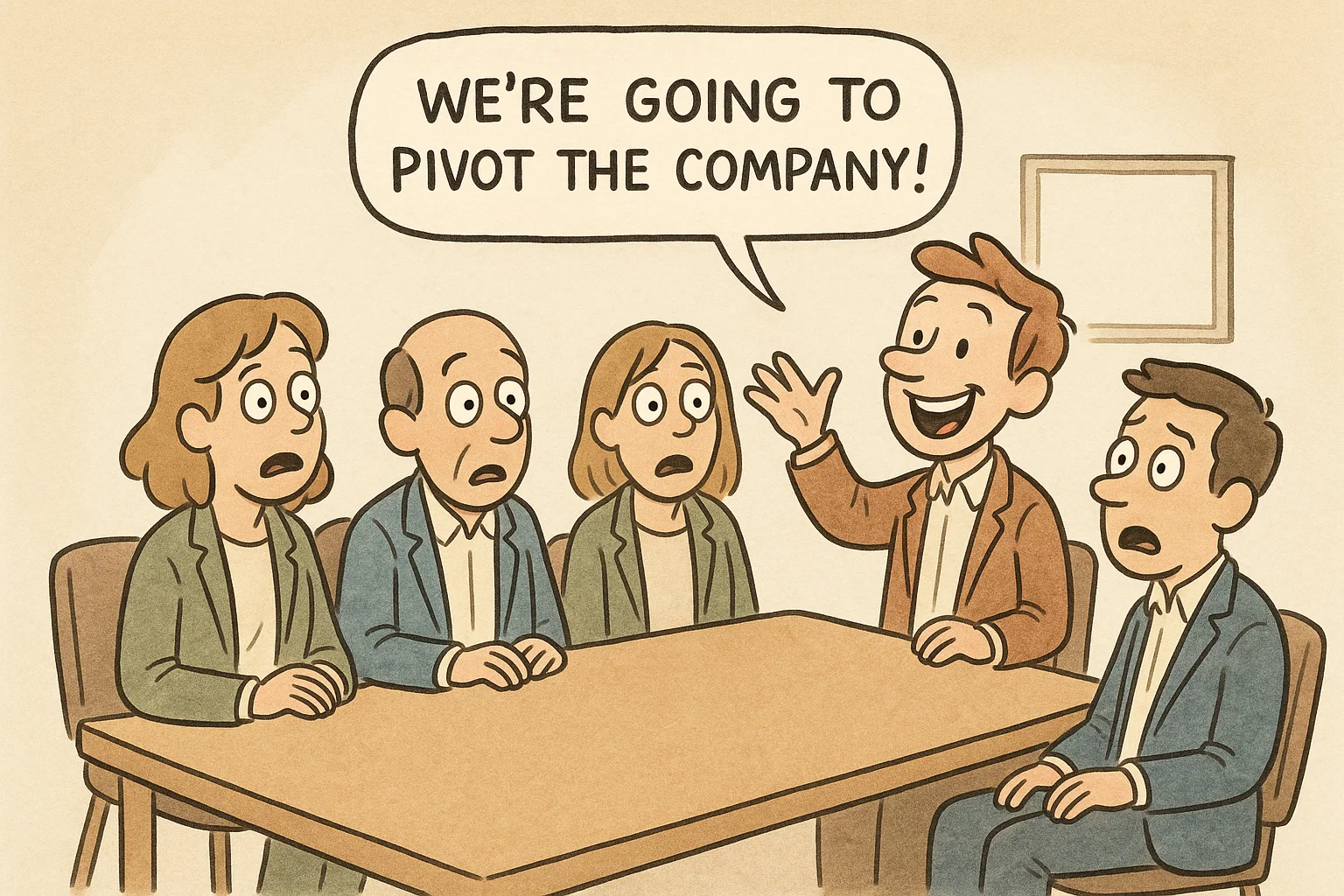· I'mBoard Team · general · 7 min read
The Board of Directors' Role in Crisis Management and Response Strategies
Learn the board’s crucial role in crisis management and response strategies, including structured decision making, indemnitee considerations, and D&O insurance insights.

Introduction
Crisis management is vital for startups to navigate unexpected challenges effectively. The board of directors plays a critical role in steering the company through crises ensuring stability and continuity. Startup CEOs and investors serving as board members must engage in structured decision making and understand legal protections such as indemnitee provisions and D&O insurance. By fostering a proactive approach boards can mitigate risks and enhance their crisis response strategies.
What is Crisis Management?
Crisis management involves preparing for and responding to unexpected events that can significantly disrupt a startup’s operations. A structured decision-making process is crucial enabling a basic board to make informed choices under pressure. Key elements of an effective crisis management plan include thorough risk assessment a clear communication plan robust recovery strategies and continuous monitoring. Understanding legal protections such as indemnitee provisions and D&O insurance is essential for board members.
The Board’s Role in Crisis Management
Leadership and oversight
* The board provides clear leadership setting the tone from the top during a crisis. * They must oversee the implementation of the crisis management plan ensuring it aligns with the company’s strategic goals. * Regular board meetings and updates are crucial to monitor progress and make necessary adjustments.
Ensuring preparedness
* Boards should proactively engage in risk assessment and mitigation strategies. * Developing and regularly updating a comprehensive crisis management plan is essential. * Conducting regular drills and simulations helps in testing the plan’s effectiveness and making necessary improvements. * It is also important to understand legal protections such as indemnitee provisions and D&O insurance to protect board members during crises.
Supporting management
* The board must provide unwavering support to the management team ensuring they have the resources needed to handle the crisis. * This includes facilitating structured decision making and ensuring clear communication channels within the organization.
Importance of a proactive approach
A proactive board can identify potential crises early and take preventive measures reducing the impact on the company. Proactive boards also foster a culture of preparedness ensuring the entire organization is ready to respond effectively.
Case studies of effective board involvement in crisis management
During the 2008 financial crisis many companies with proactive and engaged boards such as Goldman Sachs managed to navigate the turmoil more effectively. Another example is Johnson & Johnson’s Tylenol crisis where strong board involvement and decisive actions helped restore public trust and mitigate long-term damage.
Structured Decision Making in Crisis Situations
Structured decision making is critical in crisis management enabling the board and management to respond effectively and mitigate risks. This process involves seven key steps:

Crisis Management Plan
Here is a three-step crisis management plan:
Step
Description
Key Actions
Resources
Identify Stakeholders and Assess Impact
Identify all people stakeholders customers employees suppliers etc. who will be affected by the crisis and understand how they will be affected.
* Create a comprehensive list of all stakeholders. * Assess the impact on each stakeholder group. * Prioritize stakeholders based on the level of impact.
Communicate and Develop Loss Mitigation Plans
Lay down a plan for how to cover the losses for each affected group. Ensure transparent and timely communication about the situation.
* Develop tailored loss mitigation strategies for each stakeholder group. * Communicate the crisis status and response plans to all stakeholders. * Use multiple communication channels to ensure message reach.
Create a Detailed Crisis Management Plan
Once clear objectives are set put together a detailed plan including all relevant documents and legal actions.
* Define clear objectives and goals for crisis resolution. * Compile all necessary documents including legal agreements indemnities and D&O insurance policies. * Establish a timeline and action plan for each crisis management step.
CMP legal and compliance resources and insurance details.
Indemnitee and Legal Considerations
An indemnitee is an individual who is protected by an indemnification agreement which is crucial during crisis management. These agreements ensure that board members are not personally liable for decisions made in good faith during a crisis.
Legal protections for board members
Indemnification provides a safety net for directors and officers allowing them to act decisively without the fear of personal financial loss. This legal protection is vital for maintaining board member confidence and effective governance during crises.
Importance of understanding D&O (Directors and Officers) insurance
What is D&O insurance?
D&O insurance is a liability insurance payable to the directors and officers of a company or to the organization itself as indemnification for losses or defense costs in the event of a lawsuit for alleged wrongful acts while acting in their capacity as directors and officers.
Coverage and benefits
D&O insurance covers legal fees settlements and other costs associated with lawsuits or regulatory actions. It protects board members from personal financial exposure allowing them to focus on managing the crisis effectively.
How D&O insurance supports crisis management
By covering the costs associated with legal actions D&O insurance ensures that the company’s resources are preserved for crisis response and recovery efforts. This financial protection allows the board to take necessary actions without hesitation ensuring swift and effective crisis management.
Understanding indemnitee provisions and D&O insurance is crucial for startup CEOs and investors on the board. These legal considerations provide the necessary protection and confidence to navigate crises ensuring the company’s and its leaders’ long-term stability and resilience.
Post-Crisis Review and Learning
After navigating through a crisis conducting a structured post-crisis review is essential for organizations to learn and improve their crisis management capabilities.
Conducting a post-crisis analysis
Start by gathering comprehensive data regarding the crisis event and the organization’s response. Hold debriefing sessions with key stakeholders to discuss their experiences and perspectives.
Identifying what worked and what did not
Evaluate the success of crisis management strategies employed during the event. Identify areas where the response was effective and contributed positively to mitigating the crisis. Recognize shortcomings or failures in the response and pinpoint their root causes.
Implementing lessons learned
Develop action plans based on the insights gained from the post-crisis analysis. Update crisis management plans and procedures to incorporate improvements and address identified weaknesses. Provide training and education sessions to equip staff with enhanced crisis management skills and knowledge.
Strengthening future crisis management strategies
Integrate new strategies and best practices gleaned from the post-crisis review into the organization’s crisis management framework. Establish regular review cycles to ensure crisis plans remain relevant and effective over time. Foster a culture of continuous improvement and preparedness to proactively manage future crises.
Wrap
Startup boards play a pivotal role in crisis management by providing leadership ensuring preparedness and supporting effective decision-making during tumultuous times. By understanding and implementing structured crisis management strategies including legal safeguards and proactive approaches boards can safeguard their organizations’ stability and resilience. Continuous learning and adaptation based on post-crisis reviews further strengthen their ability to navigate future challenges with confidence and effectiveness.



